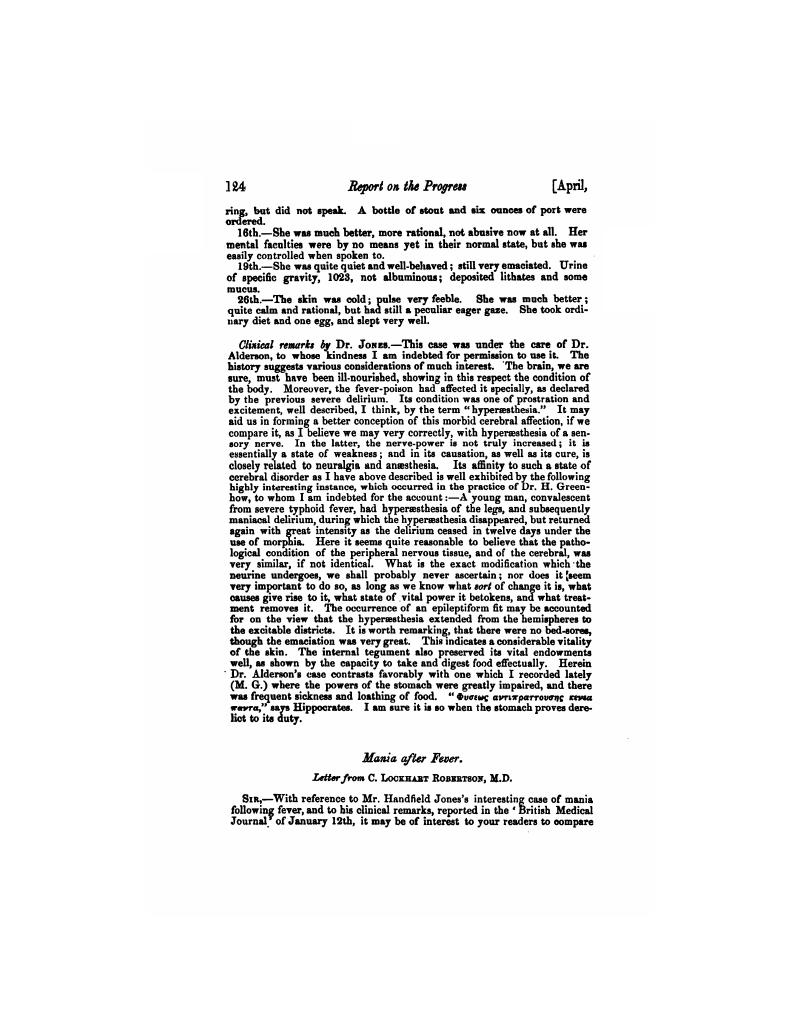No CrossRef data available.
Article contents
Mania after Fever
Published online by Cambridge University Press: 19 February 2018
Abstract

- Type
- Part III.—Quarterly Report on the Progress of Psychological Medicine
- Information
- Copyright
- Copyright © Royal College of Psychiatrists, 1867
References
∗ “Those who have written npon typhus fever—for example, Chomel, Louis (ii, p. 33, 2nd ed.), Simon (‘Journal des Connais. Med.-Chir.,’ AoÛt, 1844, p. 53), Sauret (‘Annal. Méd.-Psychol.’ 1845, vi, p. 223), Leudet (ibid., 1850, p. 148), Thore (ibid., p. 596), Schläger (‘Oesterr. Zeitschrift für prakt. Heilk.’ 1857, 33—35), Tiingel ‘Klinische Mittheilungen’ Hamburg, 1860, p. 18)—have also communicated cases of this description. Jacobi, in one eighth of his cases of mania, ascribes the disease to the consequences of typhus fever : it appears to me very doubtful, however, whether this has always been true typhus. Schläger found amongst five hundred mentally diseased, twenty-two cases which could be traced to typhus fever. I cannot indorse the opinion that the foundation of these «ases is to be sought in the hyperemia of the brain which remains after typhus fever ; all point rather to states of anœmia and exhaustion, occasionally even with renmants of the fever. In exceptional cases, these diseases may be caused by the presence of sanguineous clots in the sinus of the dura mater» perhaps by meningitis, or by acute atrophy of the brain.”Google Scholar





eLetters
No eLetters have been published for this article.